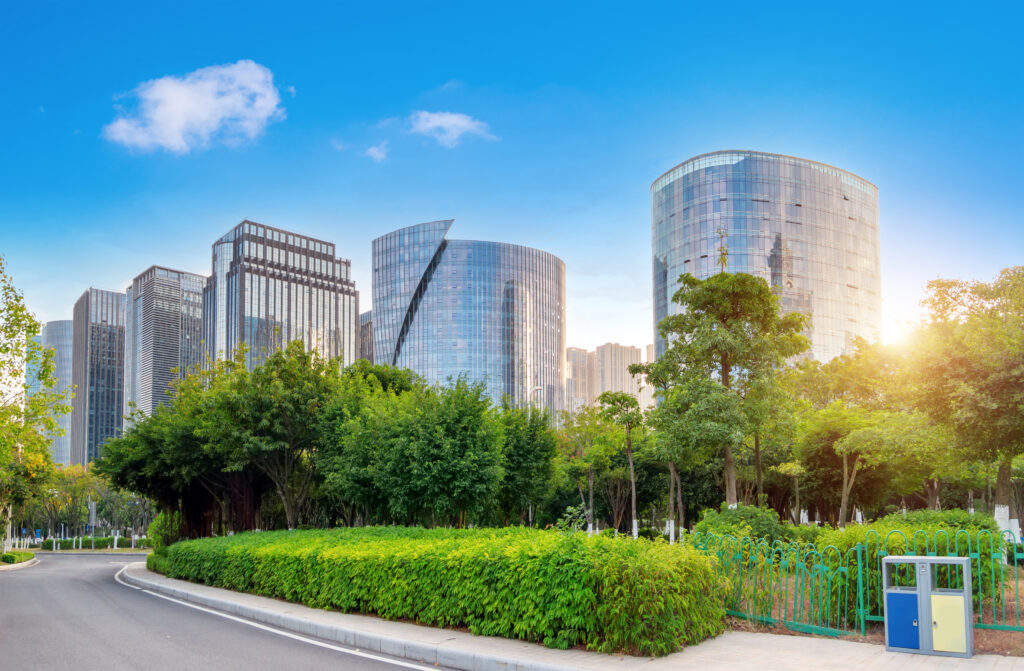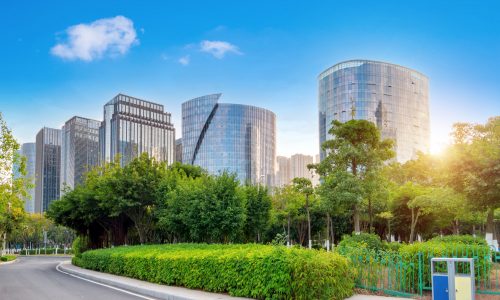Increasing urbanization, pollution, lack of space and deteriorating quality of life are just some of the challenges facing cities today. As a result, there is growing interest in creating green cities that emphasize the harmonious integration of nature into urban space.
Restoring balance: Why do we need green cities?
Green cities allow us to restore the balance between urban infrastructure and nature. Natural areas such as parks, gardens, tree avenues and publicly accessible green spaces bring many benefits to the urban environment. Not only do they improve the city’s aesthetics, but also affect air quality, water retention and protection from extreme temperatures. Nature in the city contributes to increasing biodiversity, creating habitat for wildlife and protecting ecosystems.
Environmental protection: Reducing the impact on urban nature
Green city design aims to reduce the negative impact that urban infrastructure can have on the environment. Improving water management, using green building materials, introducing energy-efficient solutions and promoting public transportation are just a few examples of measures taken to create green cities. This can reduce greenhouse gas emissions, reduce air pollution and contribute to the conservation of natural resources.
Sustainable design: the elements of a green city
Green cities consist of a variety of elements that connect people with nature. These can be city parks, community gardens, green roofs, vertical gardens, bike paths, tree avenues or even small home gardens. It is important to create spaces that promote active lifestyles, recreation and social integration. Greenery should be easily accessible to residents, both in the city center and on the outskirts.
Community Inclusion: Partnership and resident participation
A key element of green city design is resident involvement. Including the community in the process of planning and building green spaces allows their needs and preferences to be taken into account. Through partnerships with NGOs, local community groups or schools, urban community gardens, educational programs and a variety of projects can be created that involve people in caring for the environment and enjoying urban greenery.
Case study: Green cities around the world
Examples of successful green city projects can be found around the world. Singapore is famous for its innovative approach to green design, where green roofs, vertical gardens and urban parks are an integral part of the city. Copenhagen is committed to developing bike paths and green spaces. Many North American cities have strategies that seek to maximize the use of green space in urban areas.
Obstacles and challenges: How to overcome the difficulties in designing green cities?
Designing green cities can face some obstacles and challenges. One of the biggest challenges is the limited space available in densely populated urban areas. It is necessary to find creative solutions, such as reclaiming brownfield sites, creating rooftop gardens or using building walls to create vertical gardens. In addition, it is important to understand the needs and preferences of local residents and work with local authorities to ensure adequate support and funding for green city projects.
The Future of Green Cities: Innovation and development for the future
The future of green cities seems promising. With advances in technology and innovation, better solutions for designing green urban spaces are emerging. New technologies, such as smart water management systems, sustainable energy solutions and advanced plant growing methods, are enabling even greater use of green in the city. In addition, the development of green cities contributes to the creation of new jobs, the growth of the local economy and the promotion of social sustainability.
Summary: The future of urban spaces and nature
Green cities are the answer to the challenges of modern urban life. Designing urban spaces with nature in mind brings numerous benefits to residents and the environment. Caring for urban greenery contributes to improving human health and well-being, protecting the environment, increasing biodiversity, and creating attractive and welcoming spaces for living and working. Obstacles to creating green cities can be overcome through innovation, community involvement and cooperation among various stakeholders. The future of green cities promises to be promising, moving us toward a more sustainable and harmonious urban environment.





